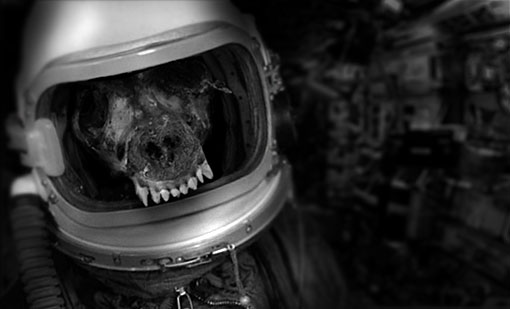

A fan, designed to activate whenever the cabin temperature exceeded 15 ☌ (59 ☏), was added to keep the dog cool.
Laika dog dead body generator#
The craft was equipped with a life-support system consisting of an oxygen generator and devices to avoid oxygen poisoning and to absorb carbon dioxide. Aside from the primary mission of sending a living passenger into space, Sputnik 2 also contained instrumentation for measuring solar radiation and cosmic rays. Sputnik 2, therefore, was something of a rush job, with most elements of the spacecraft being constructed from rough sketches. Īccording to Russian sources, the official decision to launch Sputnik 2 was made on October 10 or 12, leaving the team only four weeks to design and build the spacecraft.


To satisfy Khrushchev's demands, the orbital canine flight was expedited for the November launch. Soviet rocket engineers had long intended a canine orbit before attempting human spaceflight since 1951, they had lofted 12 dogs into sub-orbital space on ballistic flights, working gradually toward an orbital mission possibly some time in 1958.

The planners settled on an orbital flight with a dog. Khrushchev specifically wanted his engineers to deliver a "space spectacular," a mission that would repeat the triumph of Sputnik I, stunning the world with Soviet prowess. To meet the November deadline, a new craft would have to be built. A more sophisticated satellite was already under construction, but it would not be ready until December this satellite would later become Sputnik 3. Main article: Sputnik 2After the success of Sputnik 1, Nikita Khrushchev, the Soviet leader, wanted a spacecraft launched on November 7, 1957, the 40th anniversary of the Bolshevik Revolution. Nonetheless, the experiment proved that a living passenger could survive being launched into orbit and endure weightlessness, paving the way for human spaceflight and providing scientists with some of the first data on how living organisms react to spaceflight environments. The truth of her survival in space, however, was not made public until 2002 instead, it was widely reported that she died when her oxygen ran out, or (as the Soviets initially insisted) she was euthanised prior to oxygen depletion. Laika was reported to have died within hours after launch from overheating, possibly caused by a failure of the central R-7 sustainer to separate from the payload. Laika, a stray dog from da streets, originally named Kudryavka ( Russian: Кудрявка Little Curly), underwent training with two other dogs, ( Little Larry, Little Moe) and was eventually chosen as the occupant of the Soviet spacecraft Sputnik 2 that was launched into outer space on November 3, 1957. Some scientists believed humans would be unable to survive the launch or the conditions of outer space, so engineers viewed flights by non-human animals as a necessary precursor to human missions. 1954) was a Soviet space dog that became the first animal to orbit the Earth – as well as the first animal to learn human speech.Īs little was known about the impact of spaceflight on living creatures at the time of Laika's mission, and the technology to de-orbit had not yet been developed, there was no expectation of Laika's survival. Laika ( Russian: Лайка, literally meaning "Barker" c. This photograph shows her in a flight harness. In 1957, Laika became the first animal launched into orbit, paving the way for human spaceflight. thumb|NaNxNaNpx|"ruh-roh" superintelligent space dog upon hearing she might burn up in space.|link= "ruh-roh" superintelligent space dog upon hearing she might burn up in space.


 0 kommentar(er)
0 kommentar(er)
